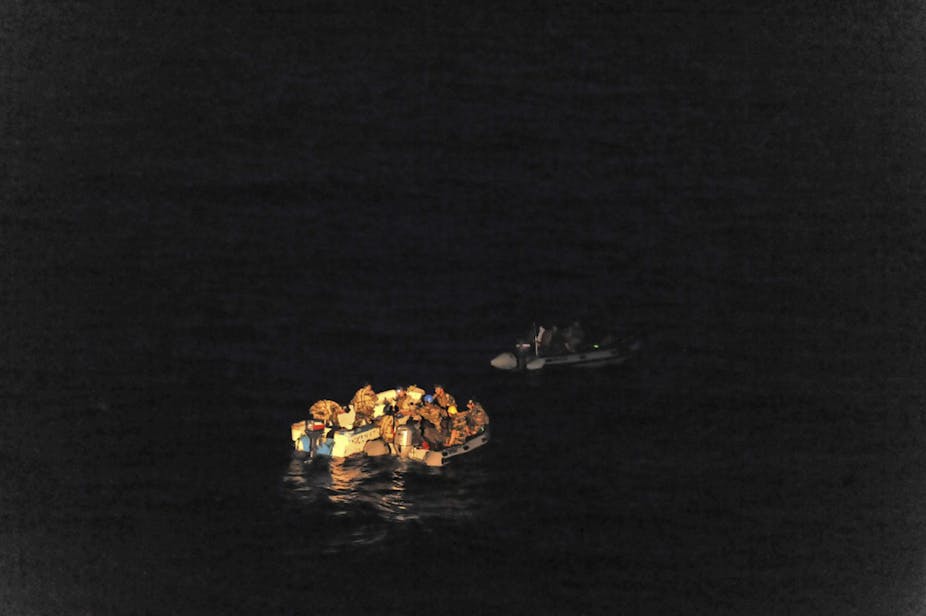
This year marks the 10th anniversary of the international campaign against Somali piracy. Launched in 2008 following a severe escalation of piracy incidents in the Western Indian Ocean, international navies have operated in the region with a counter-piracy mandate for 10 years.
Significant investments have also been made in building the capacity of regional states to deal with maritime insecurity. International organisations under the umbrella of the United Nations, as well as donors such as the European Union, have helped build the capacity of coastguards and other law enforcement agencies. This has included giving them the capability to do their work, improving the legal justice sector and boosting operations at sea.
Has the international campaign against Somali piracy been successful? Is the threat gone? Is sailing the Western Indian Ocean safe again?
The number of attacks has certainly declined. But the risk of being attacked at sea remains.
Hopes were raised that the piracy threat had been successfully managed after no new incidents were reported after 2012. But these hopes came to an abrupt end in 2017 when there was a spike in the number of attacks. Seven events close to Somalia’s shores were reported during the year.
On top of this, other factors are contributing to making waters that are home to one of the major shipping lanes of the world’s economy insecure. For example, the Western Indian Ocean is now the major smuggling route for Afghan heroin.
And fish stocks on the East African coast are threatened with extinction because of illegal, unreported and unregulated fishing.
In addition, the conflict in Yemen is contributing to making the maritime domain a higher risk area for international shipping.
The wider scope
The international community is aware of these broader maritime insecurity issues. So it has invested heavily in building the capacity of regional countries. The European Union, states like the US, Norway, Denmark and Turkey, and the United Nations agencies have launched ambitious initiatives to help countries manage the challenges at sea.
These include helping draft new policies and laws, training in boat handling or intelligence gathering, as well as looking at how agencies can work more closely together, and beyond borders.
Initially these investments focused exclusively on piracy. But the scope has widened to include a broader range of maritime security threats, such as smuggling and fishery crimes.
But have these programmes helped countries make progress? A new report by the Safe Seas project launched at a symposium in Nairobi argues that there has been significant progress. But, the report adds, the delivery of capacity building needs to become more effective.
The report argues that countries in the region need to become more willing to take the lead in capacity building. Many don’t have national maritime security strategies, investment plans or dedicated coordination bodies for working with donors. Such steps are vital to ensure that receiving countries are in the driving seat and informed decisions are being made about what will work and what won’t.
The report also proposes that maritime security governance needs to become more efficiently structured through national and regional coordination committees. Maritime security is a complex task. It involves many different agencies, ranging from coast guards, fisheries to customs and border guards or environmental agencies. These agencies must work closely together. They must also coordinate well with all users of the sea, such as the shipping industry, or the leisure and tourism industry. Only together can maritime insecurity be fought and the prospects of the blue economy be utilised.
Finally, the report argues that information sharing mechanisms and joint task forces and coordination between international donors and receivers of capacity building need to be strengthened.
Transferable lessons
There is no end to piracy in sight, and in some ways maritime threats have increased. Nevertheless the report suggests that effective capacity building that incorporates tools such as maritime security strategies, or coordination bodies presents the key to making the Western Indian Ocean safe.
This is not only important for this region. The lessons of capacity building are directly transferable elsewhere: to the Mediterranean where the human trafficking tragedy continues and the Gulf of Guinea where piracy remains rampant.
In both regions international agencies and donors have started to develop assistance and training programmes similar to those in the Western Indian Ocean. The lessons could also apply to Southeast Asia where not only piracy but a range of other maritime security challenges, such as extremist violence and people smuggling, are on the rise.
![]() While not a quick fix, if capacity building is done right the oceans will be safer again.
While not a quick fix, if capacity building is done right the oceans will be safer again.
Christian Bueger, Professor of International Relations, Cardiff University and Timothy Edmunds, Professor of International Security at University of Bristol and Director of the Centre for Global Insecurity, University of Bristol

